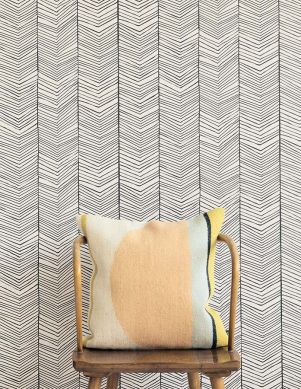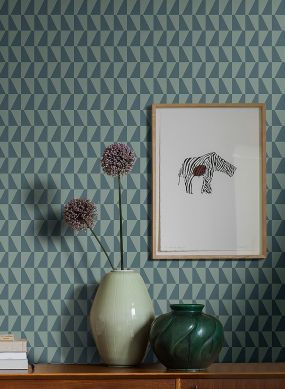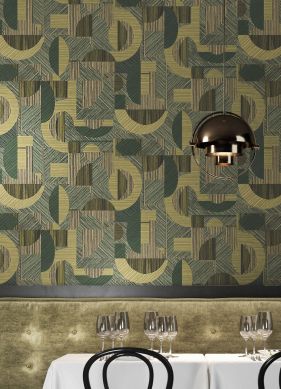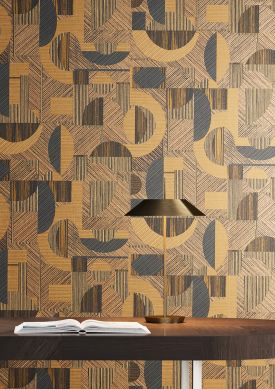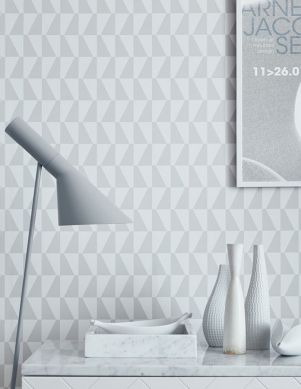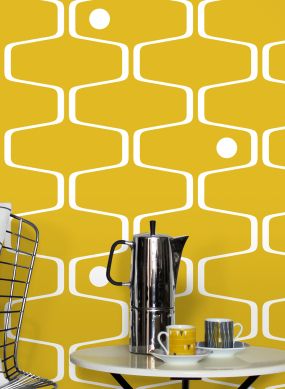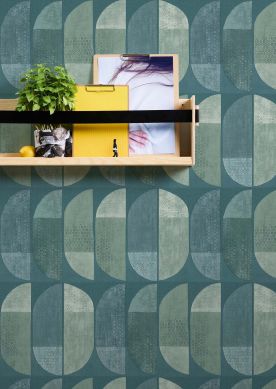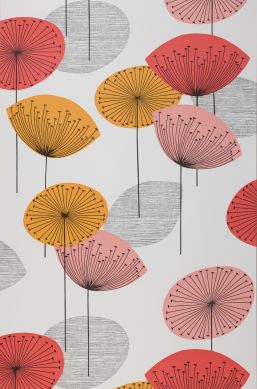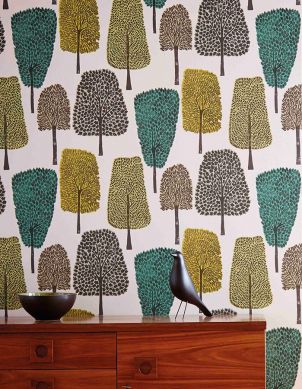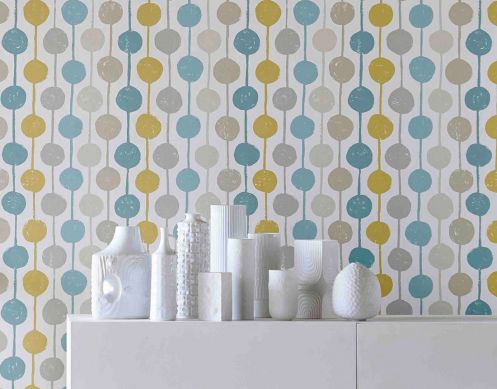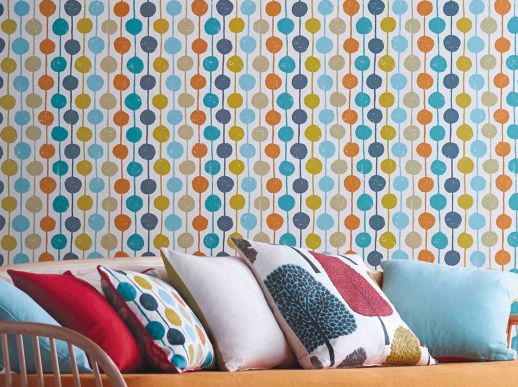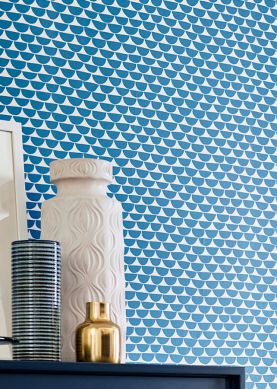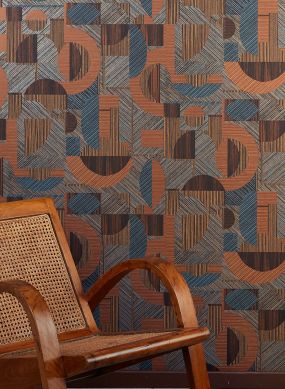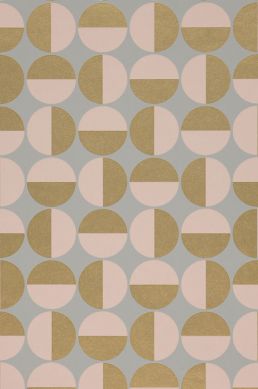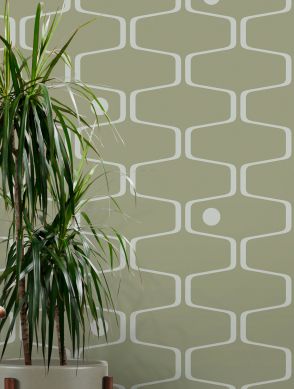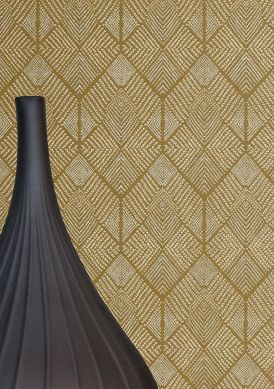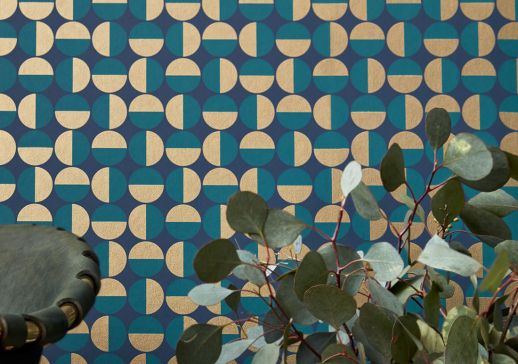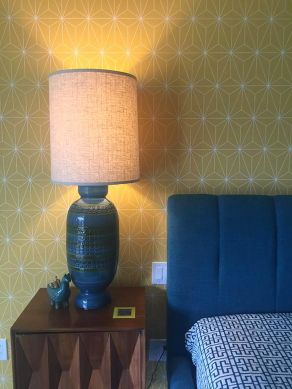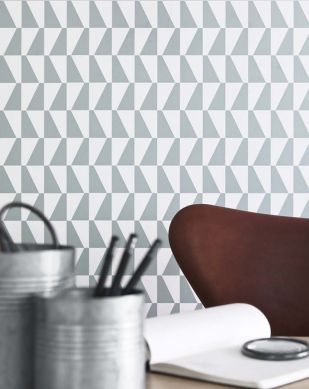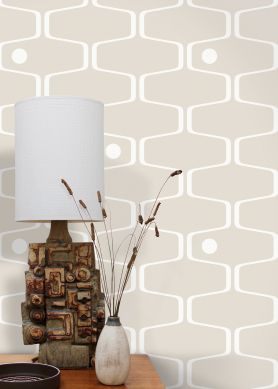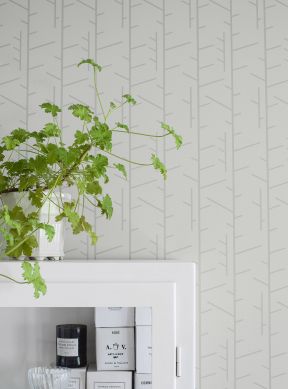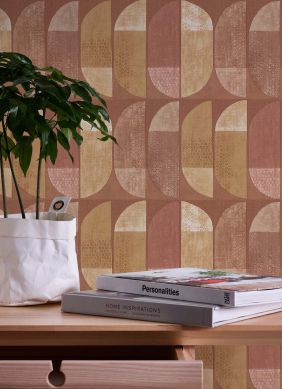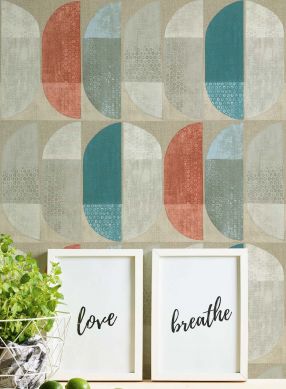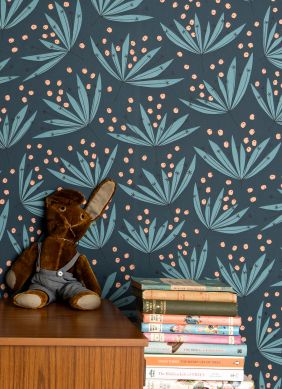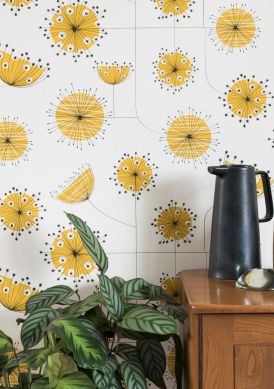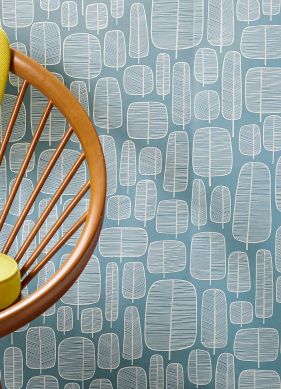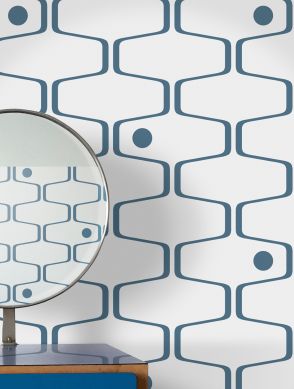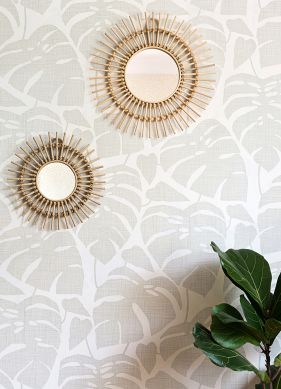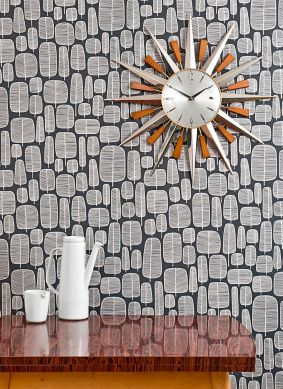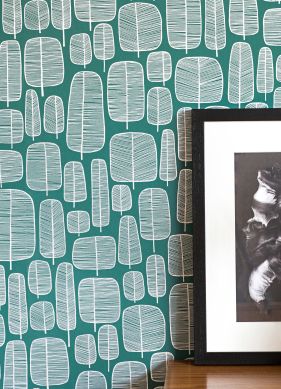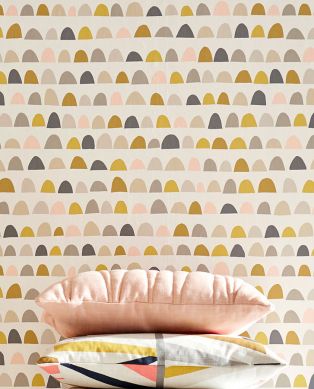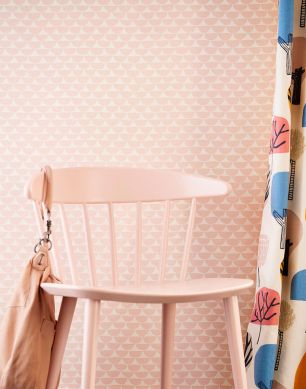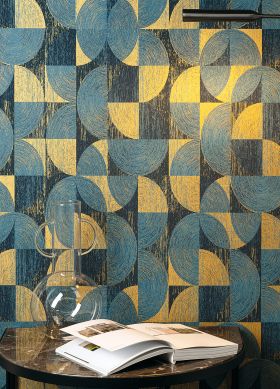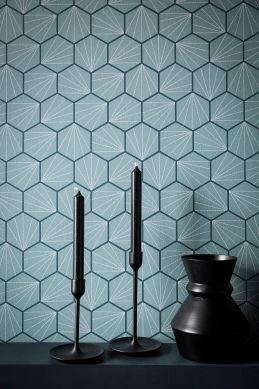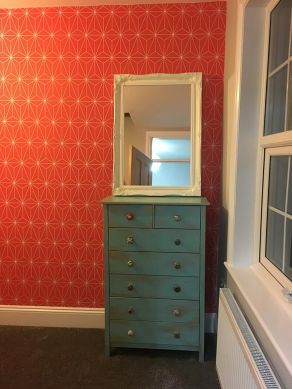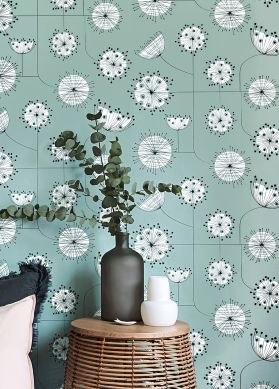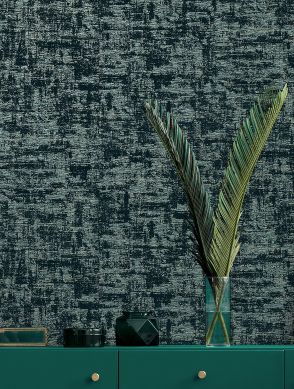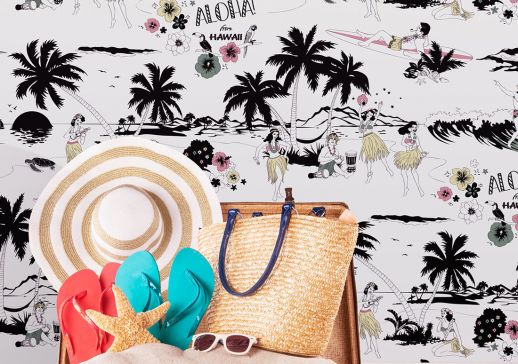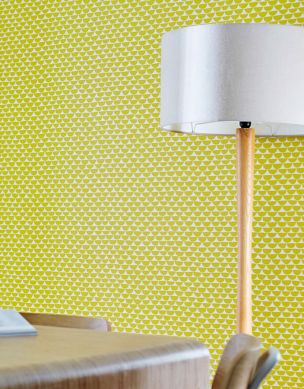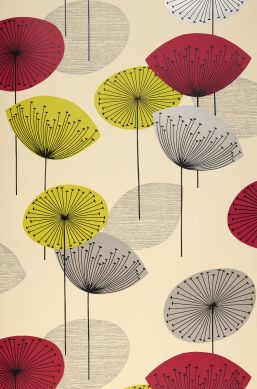Mid-Century Modern Wallpaper
Mid-Century Modern Wallpaper: The Guide
Having developed in the years following the post-war period, Mid-Century Modern is an interior design style that is still ever-present in contemporary homes. Rooted in functionality, clean lines, and simplicity, it emerged as a form of rebellion against the ornate traditional decoration styles of the preceding decades and became a way for families that wanted little to do with the stuffy interiors found in their parents’ homes to embrace a more modern, organic way of living. Often shortened with the acronym MCM, Mid-Century Modern made full use of the new materials that had become available, such as plywood, plastic, Formica and vinyl, to create furniture with sleek and rounded shapes. Mid-Century Modern wallpapers embody this forward-thinking style with a range of geometric elements like herringbone and chevron, and motifs like the atomic starburst, and with abstract fantasies inspired by influential artists like Mondrian. These stunning designs are still as popular today as they were back in the 1950s.
Table of Contents
- How can the Mid-Century Modern style be described?
- Which types of looks can I be realised with a Mid-Century Modern wallpaper?
- Which motifs are commonly found in Mid-Century Modern wall décor?
How can the Mid-Century Modern style be described?
Bridging the gap between the pre- and post-war era, Mid-Century Modern styles blend an unbridled passion for sleek modernity with the bold use of both natural and man-made materials.
Clean lines and sleek shapes
At the dawn of the Fifties, a new era was beginning to emerge. With memories of recent wartimes fading away and the economies in full recovery, the industrial machinery was humming along, and the Space Race was beginning to take shape. Focussed on the future, design shifted towards simplicity, functionality, and efficiency following the motto “form follows function”. Adhering to this principle, the Mid-Century Modern style’s emphasis is on clean lines and sleek shapes with furniture such as modular shelving and storage units that could be rearranged to suit different needs.
A modernist response to previous ornate and decorative styles
The end of World War II truly marked the end of an era. The public wanted to leave behind the excess and opulence of pre-war design and embrace a more modern, forward-thinking aesthetic. With houses mostly still decorated in overly ornate and decorative styles, such as Art Deco and Victorian, Mid-Century Modern emerged as a response which focussed on clean lines, using modern materials such as plastic and metal that symbolised the industrial society.
An American reflection on the influence of Bauhaus and Internationalism
The epicentre of the Mid-Century Modern movement was in the United States. Having brushed off the effects of the Great Recession and emerging victorious from WWII, American designers took inspiration from the Bauhaus and Internationalist movements and incorporated the geometric forms and clean lines of Le Corbusier, Mies Van Der Rohe and Florence Knoll into a modern interior design style, creating sleek living concepts that are still popular today.
Which types of looks can I be realised with a Mid-Century Modern wallpaper?
Embodying the positivity of the time from which it originates, a Mid-Century Modern wallpaper works well with charming vintage looks with a contemporary twist, natural and organic designs, and as a way to define bold feature walls.
Modern vintage charm
Like the iconic Eames Lounge Chair, created in 1956 and yet still a great fit in any stylish contemporary home, a Mid-Century Modern wallpaper is an excellent centrepiece for a look that blends modernity with a charming retro vibe. Wall décor with a geometric pattern and a limited colour palette can provide the colour scheme for matching contemporary furniture, like a sleek sofa or a minimalist coffee table. Combined with Mid-Century Modern decor items, such as vintage lamps, a cohesive look is created.
Clean-cut organic
While taking full advantage of the recent availability of new materials such as fiberglass, plywood, foam and other plastic laminates, Mid-Century Modern designs juxtaposed them with plenty of natural materials like teak wood to create looks with a distinctive organic look. A Mid-Century wallpaper featuring a natural motif in a neutral colour palette dominated by white, beige, or grey will be a perfect addition to a room with hardwood floors to create a coherent organic ambience.
Bold and graphic
Sometimes a room doesn’t need a full overhaul, but simply a new, striking focal point that captures the attention and sets the scene for the rest of the design. A Mid-Century Modern graphic wallpaper featuring a bold geometric design (e.g. the iconic chevron and herringbone patterns with their hypnotic zigzag effect) can act as a catalyst, producing a statement wall that complements minimalist furniture and décor.
Retro chic
Depicted in countless movies and TV shows, 1950s and 1960s Americana is still perceived with nostalgia and as a symbol of a time full of positivity and where everything seemed possible. A Mid-Century Modern wall décor featuring a bright atomic starburst pattern or other motifs from the Space Age period is a great starting point for a chic throwback design complete with vintage furniture like a classic Eames chair, a Tulip table, and other accessories from that era.
Which motifs are commonly found in Mid-Century Modern wall décor?
Departing from the more ornate designs that preceded it, Mid-Century Modern wall décor uses geometric patterns, abstract designs, and stylised nature motifs to great effect.
Geometric patterns
Heralding a new era dominated by science and rapid scientific developments, Mid-Century Modern design made frequent use of a variety of geometric patterns, unafraid to play with their size and shape, and using a variety of bold colour combinations. Amongst the most popular are chevrons, featuring zigzag lines in a repeating pattern, and herringbone, where a series of parallel lines intersect at a diagonal angle, creating a wiggly effect. Also very common are simple repeating shapes, like diamonds, circles, and squares.
1950s motifs
While appearing contemporary and innovative at the time, a number of motifs which were introduced by Mid-Century Modern wallpapers now have a distinct retro feel. The most celebrated are atomic starbursts, featuring abstract shapes that radiate outward in a variety of dynamic colours, and repeating boomerang shapes in a plethora of bright hues, often set against a neutral background tonality.
Stylised nature motifs
While heading towards modernity, Mid-Century Modern design was still firmly rooted in the natural world and frequently incorporated natural motifs. Leaves, trees, and flowers were extremely popular and can be found in a variety of shapes and sizes on Mid-Century Modern wallpapers. They were often depicted in a stylised, abstract form, with bold lines and contrasting hues.
Abstract designs
Inspired by the Master of Modern Art that preceded it, for instance Dutch painter Piet Mondrian and American artist Jackson Pollock, abstract designs are a frequent feature of Mid-Century Modern wallpaper. Splatters, drips, and other similar motifs create playful and abstract patterns that can be found in many Mid-Century Modern wallpapers, their irregular shapes adding a whimsical touch to the room.








